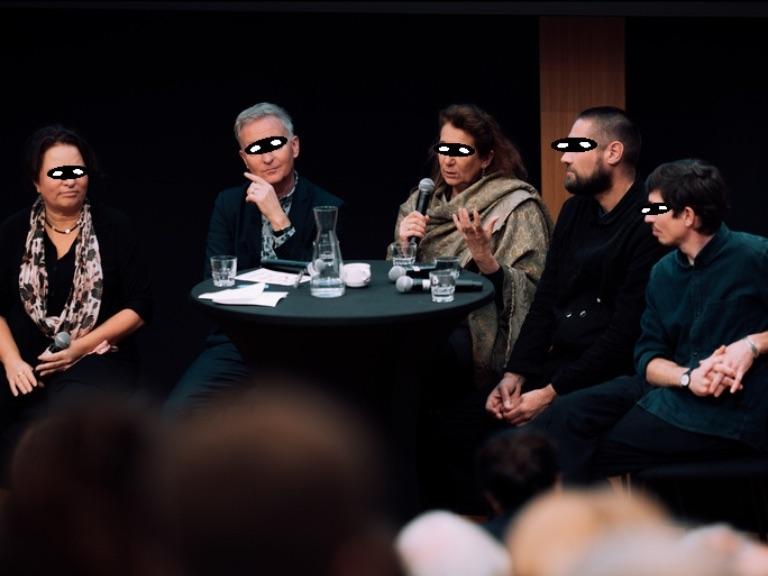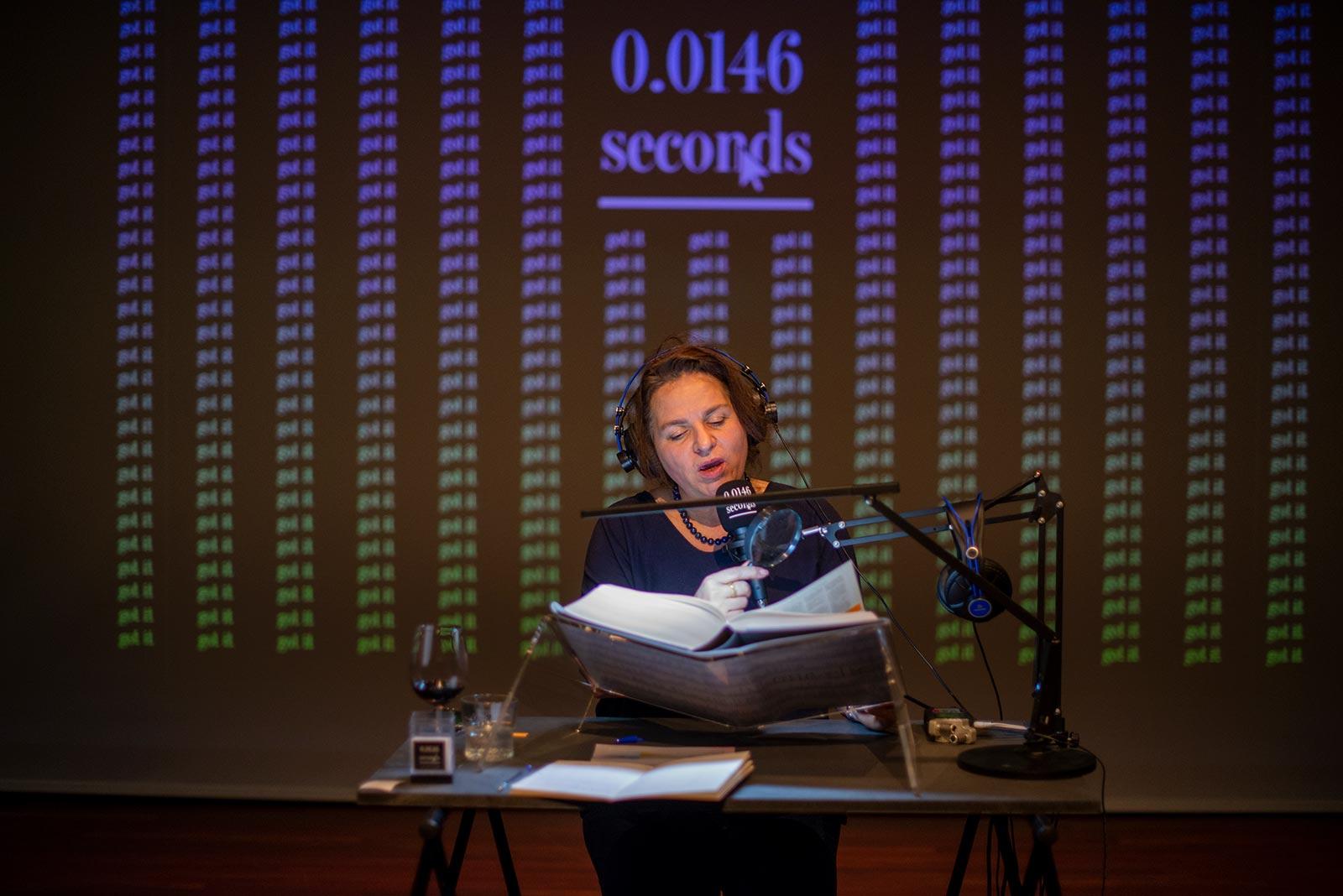Waag organizes several events open to the public. During these events photos and videos are taken which are used in reporting about the events. This is important, for example to extend the event’s reach and impact beyond the audience that has attended the event. But photos and videos are personal data, and can reveal a lot about a person. Therefore, collecting them needs to be considered in the light of the right to privacy of the attendees.
This dilemma was the starting point of Waags public event on February 6th titled ‘Mij niet gezien’.
How to comply with the law
The evening started with a presentation from Waag's Data Protection Officer Stefano Bocconi. He introduced what GDPR says regarding the processing of personal data, and under what conditions this is legal. There are mainly two possibilities for organizations in order to comply with the law: the first one is to ask participants their permission to take photos (the informed consent), and the second is to appeal to legitimate interests, for example a right to report, similarly to what applies to journalists.
Both approaches have their limitations: asking for consent during an event with many participants is impractical, and an organization legitimate interests always need to be weighed against the privacy of the participants. In some cases, such as when the participants are children or the photos reveal details that the law considers as sensitive (e.g. religious or philosophical beliefs), the right to privacy overrules an organization’s legitimate interest.
On the one hand, GDPR rules can be seen as a ‘burden’ for organizations. The perspective changes when we consider that current face recognition techniques have opened the door to extremely privacy-invasive applications. It is nowadays possible to associate faces on a photo with their names and other personal information, harvested from online websites. Such applications might be useful for the police, but they are available to any malicious agent, with no control on how these companies build and market such tools.
There is thus a democratic risk in publishing photos online. So, how should an organization behave?
Make the audience unrecognizable
Waag has created a tool that, using these same face recognition techniques, can automatically apply masks to faces detected in photos, that can then be published online safely.
Should we use such a tool, and how? Or, what ethical decision should an organization take regarding the online publishing of photos of events?
Answering this question was the goal of the second part of the Mij niet gezien-evening, led by Douwe Schmidt. Douwe presented a method called the ‘Seven Step Plan’, which supports a group in taking a responsible and ethical decision.
Douwe started by asking participants what is ethical, in order to choose an ethical framework as a reference for the decision. An example of such a framework is the utilitarian one -thereby, we seek to maximize the benefits and/or to minimize the drawbacks. We chose a value-based approach, exemplified by the sentence ‘Take into consideration the rights, interests and wishes of all involved.’
The following step was to define a concrete decision to be examined. Such a decision needs to be realistic, meaning that it has to be one that is actually in the participants’ power to implement. Theoretical issues are therefore excluded, as well as all that is not in the participants’ power to execute.
Examples of the proposed decisions were:
- We mask all pictures from Waag events with children present
- We mask everyone in all pictures taken at Waag events
- We always ask for consent to take pictures
- We create a picture zone during events
- We don’t pictures of people at all
- We ask people who don’t want to be in pictures to physically wear a mask at the event.
After a vote we chose to debate on the decision ‘we always ask for consent to take pictures’.
The method then suggests to list who are the stakeholders, in order to consider multiple points of view. In our case we indicated the following parties:
- Event visitors
- Organizers (Waag for example)
- Photographers
- Funders (entities that fund the event and need to verify it took place)
- No-showers (people that did not come and would like to still know what the event was like)
- Data scrapers (such as companies harvesting online personal data)
- Flickr (in the specific case the online repository used by Waag)
We then listed arguments in favor of our chosen decision (Pro), and arguments against it (Against). This is where the ethical framework comes into play. Both Pro and Against arguments were classified in principles (the argument is based on a principle or value) and consequences (the argument reflects something that happens because of the decision).
For the Pro arguments, the principles were: ‘we take a stance for privacy’ and ‘we comply with regulation’. Examples of consequences were ‘we gain experience’ and ‘we create awareness’.
For the Against arguments, the principles were ‘informed consent is unclear’, “we would give the wrong signal’, and ‘it is against what Waag stands for’. Consequences were, for example, ‘we would need to keep records’.
The participants were then asked to choose the side with the more important principles, disregarding consequences. Principles are more important than consequences in a value-based ethical framework.
The discussion was very lively and we ran out of time before coming to an agreement. Douwe presented us with what a possible conclusion could have been:
‘I do ask for consent, which is morally correct, because it gives agency to the visitors and we comply with GDPR, despite the fact that we go against what we stand for and informed consent is unclear.’
The opposite decision could also have been taken, in which case the ‘because’ and ‘despite’ parts would have been swapped.
The Seven Step-method has one final interesting part, which is that it requires the participants to implement actions to mitigate the effects of not applying the principles of whichever side has not been chosen. It is therefore not a case of ‘the winner takes all’, but instead, the method urges to still seek to behave in the most ethical way.
Start the dialogue
Given the interesting insights of the evening, the Seven Step Plan appeared to be very suitable in the case of ethical decision making and it will hopefully be applied to other cases within Waag.
As for the issue of taking pictures, we will continue this debate within Waag, and we'll regularly update our experiment following Mij niet gezien via the project page.

